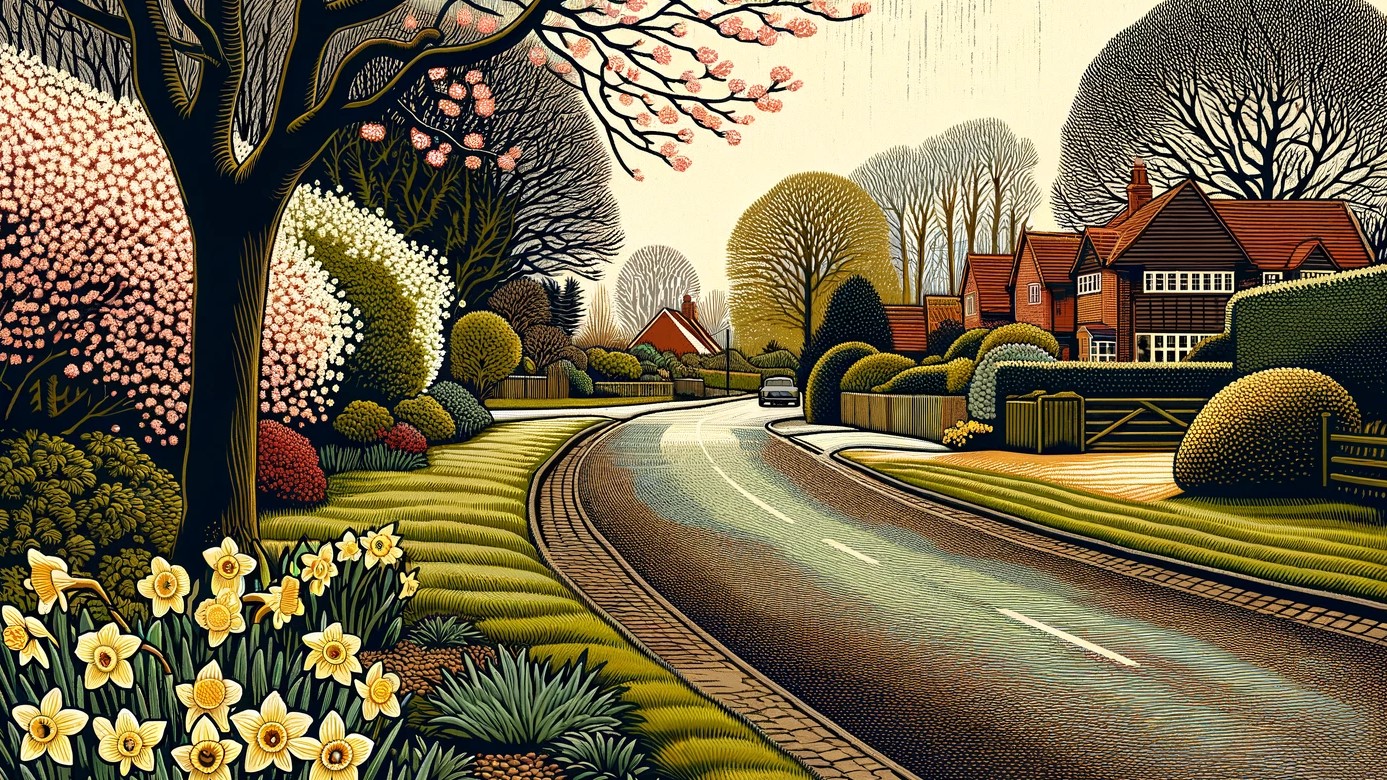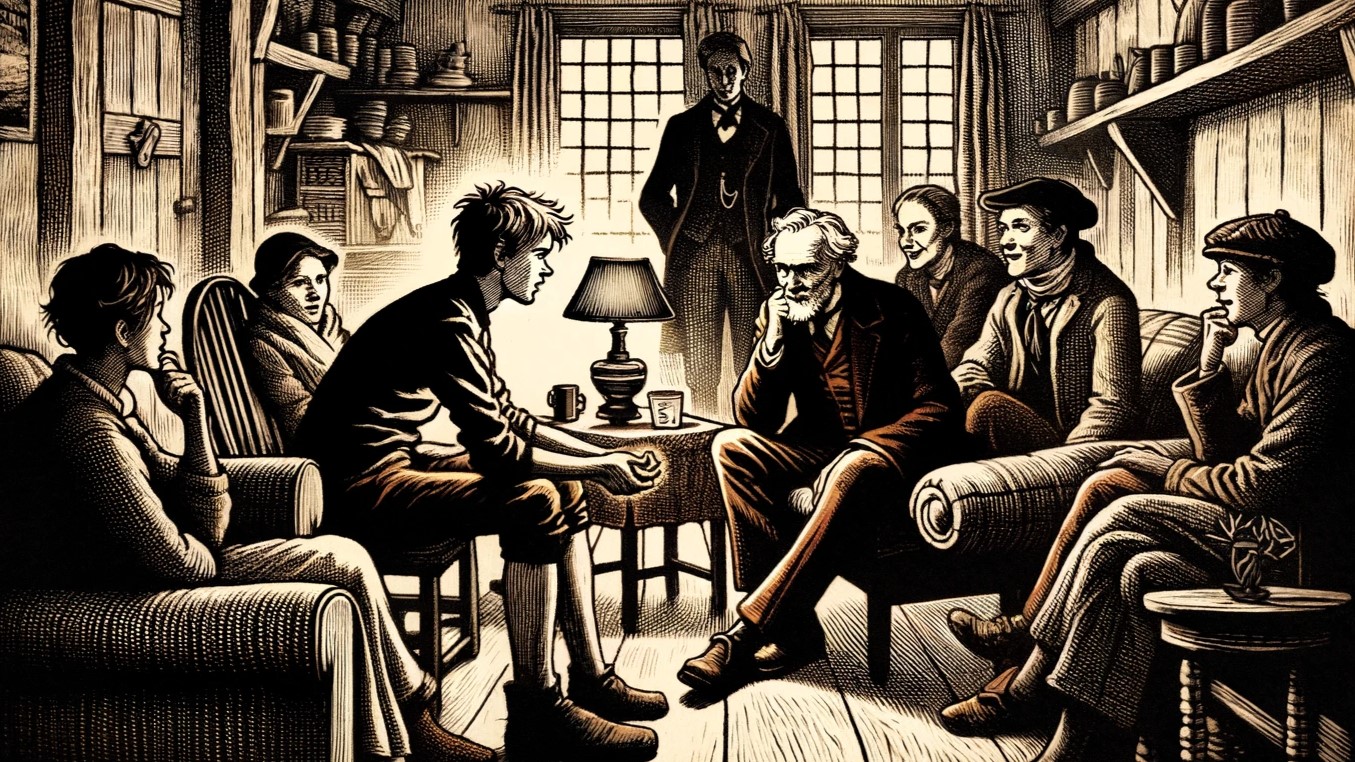
A few days ago we returned from a one-week trip to Äkäslompolo in Finnish Lapland, where we did some cross-country skiing. I thought I’d write a post about my experiences as a novice skier.
First I had to hire the equipment (skis, boots and sticks) which cost about £100 for a week. The boots, similar in weight to walking boots, clip onto the skis at the toe and pivot there, allowing you to lift the heel. The sticks have straps that attach them to your gloved hand. My skis had a half-metre-long felt strip (or skin) on the underside, in the middle section. This skin creates friction (traction) so that you can push forwards. Cross-country skis curve upwards. If you lay them flat on a level floor you’ll see a gap between the mid-point of the ski and the floor. If you stand with your weight on both skis they flatten, but not enough for the skins to make contact with the ground, so the skins don’t stop you gliding. However putting all your weight onto one ski presses the skin into the ground, which creates enough friction for you to kick off from that ski. Skis vary, of course, and some employ other types of frictional surfaces to do the same job. I wore a wicking merino base layer, a fleece, a lightweight waterproof jacket, and the same showerproof trousers I use for hiking in the UK. If anything I felt too hot, even in temperatures of -5 C. I could easily have removed the fleece while skiing. You also need a hat and gloves. If you want to fit in with the locals you wear a beanie-style hat. I had a trapper-style one with ear flaps that I bought years ago.
Waymarked ski trails fan out from Äkäslompolo, created and maintained by some means I never observed. These trails consist of two skiing tracks a few metres apart, one track for each direction of travel. You use the track on the right just as, in Finland, you drive on the right. The tracks resemble miniature railway lines, except that they have two grooves rather than two rails. Faster skiers coming up behind you are supposed to leave the track and ski around you. You don’t need to step aside for them. In some places, for example at trail intersections, the tracks disappear or become indistinct. I suspect the same applies on the more demanding upland trails, though I’ve no direct experience. The village of Äkäslompolo sits beside a lake of the same name. (In Finnish, lompolo means a small lake.) In March, three-quarters of a metre of ice and a further half-metre of snow cover the lake. A trail across a frozen lake such as this, with no ups and downs, makes a good practice ground for the novice.
Cross-country skiing looks deceptively easy on videos, or when you watch the natives who likely started as children. However when you first stand on the track you sense an unnerving lack of friction under your skis. If you shift a little from equilibrium you fall over. The skis slip forwards or backwards, or you topple sideways because the grooves make it tricky to step to one side to restore equilibrium. And you may find it hard to get back up again after a fall. The skis clash with each other, slide across the ground, and so on. Having sticks strapped to your hands doesn’t help. To get up on your own you need to start with the skis parallel and across any slope, but you may still have to unstrap the sticks and detach the skis if all else fails. As you gain confidence you can begin to shuffle forwards with alternate legs and with the help of the sticks, like walking with trekking poles. With yet more confidence you can proceed more vigorously, kicking hard on the skis alternately, and gliding after each kick. Or you can keep your legs together, propelling yourself forwards using the sticks alone. More advanced skiers often ski freestyle, as opposed to the classic style described above. Freestyle looks more like skating and doesn’t make use of the grooves. Away from the lake you will, of course, encounter gradients. When descending a slope you squat down to lower your centre of gravity and hold your sticks horizontally under your arms as you glide. You need to remain still, relaxed and in the zone until you come to a halt. When I first did this my feet juddered back and forth as I slid, and I soon fell. A passing Finnish woman told me (in English) to relax. (Good advice, but easier said than done.) You may well lose your nerve at first on the longer steeper slopes, and feel you have to fall in order to stop. You see skiers towed by dogs. (What could possibly go wrong?) You see skiers with babies in pouches on their backs. (Yikes.) More experienced skiers often descend slopes without squatting, but I had an uncomfortable experience falling backwards from a standing position. My feet, pinned to the skis at the toe, had no choice but to remain horizontal as I fell. So when my lower legs also fell into a near horizontal position my ankles ended up like those of a ballerina en pointe. On the other hand, if you fall backwards from a squat you have a more comfortable angle between your feet and lower legs as you fall. Also you don’t have as far to fall. In several places near Äkäslompolo the trails pass over hump-backed bridges, where the tracks disappear. At one such place the trail curved to the left beyond the bridge. I pushed off from the bridge-hump and glided down but, having no way to steer to the left in the absence of tracks, I carried straight on, shooting off the trail and into a wooden signpost. The post stopped one leg but the other slid on, producing an uncomfortable stretch in the groin. Had I done any more skiing on subsequent days I’d have tried to learn the technique for turning in situations like that.
So what about going uphill? You can classic-ski up a slight gradient, but to ascend a steeper gradient you need to step out of the tracks. You angle your skis outwards, dig the inner edges into the snow and walk up, creating a herringbone pattern on the snow. You’ll likely slide back at first while attempting this, so you need to keep your sticks pointing backwards and downwards behind you, in order to halt any such slips. More experienced skiers ski up steep hills using the freestyle I mentioned earlier.
So there you have it, the limited take of a novice with two days’ experience and a paltry 14 km under his belt. I can see the attraction of cross-country skiing. You cover a lot of ground in a short time compared to walking, and the faster sections feel exhilarating. I gave it up after two days because every part of my body ached or hurt. I needed time to recover and also wondered about the risk of more severe injury. I wanted to move at a brisk pace rather than just shuffle along, so I knew I’d have to fall many more times.
























